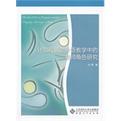计算机辅助外语教学中的教师角色研究
出版时间:2012-8 出版社:安徽大学出版社 作者:冯辉 页数:143 字数:190000
内容概要
《计算机辅助外语教学中的教师角色研究》共有六个章节。第一章是导论部分,主要介绍选题的依据,也讨论了以下一些问题,即为什么关注教师,教师角色和计算机辅助外语教学的定义,研究的目的等等。第二章和第三章则主要介绍了这项研究的背景。本部分首先比较详尽地描述了计算机辅助外语教学(包括其历史、发展和对英语教学的影响),然后回顾了我国英语教学三方面的情况——除了概要介绍我国传统的英语教学外,还解释了目前我国英语教学中计算机辅助教学发展的趋势(包括原因、目的以及一些实例),以及这种改变带来的优缺点。这样,语言教师就和我国的计算机辅助外语教学联系在了一起,从而解释了教师在这种新的外语学习方法中势必要更好地扮演其角色。第四章首先简要介绍了我国传统英语教学中教师的角色,然后着重分析了我国计算机辅助外语教学中教师角色的转变。文章引用一项实际调查研究的结果以评价这种转变后的角色,并为第五章作了铺垫。第五章主要论述教师角色研究的结果对外语教师教育和发展的有关启示,包括教师角色转变后所应做的一些调整,对计算机辅助外语教学和学习者自主性关系的理解,以及支持教师角色转变的重要性等等。文章指出教师是计算机辅助外语教学中不可或缺的一部分,因此他们必须通过训练才能具备成为学习过程的管理者和促进者的能力。第六章是结论部分,对本研究主要观点和研究结果进行了总结,同时也指出了本课题有待进一步研究的领域和方向。
书籍目录
Preface
Foreword
List of Abbreviations
Chapter1 Introduction
1.1 Why Focus on the Teacher
1.2 A Brief Introduction of Teacher's Roles
1.2.1 What Is a Role
1.2.2 What Are Teachers' Roles
1.2.3 Factors Influencing Teachers' Roles
1.3 A Brief Introduction of CALL
1.3.1 Whatls CALL
1.3.2 Why Computer-assisted Instruction
1.3.3 The Advantages of CALL Systems
1.4 General Organization of the Book
Chapter 2 CALL:Emergence, Development and Its Impact
2.1 Introduction
2.2 The Emergence ofCALL
2.3 The History of CALL:Three Phases
2.3.1 Behavioristic CALL
2.3.2 Communicative CALL
2.3.3 Integrative CALL
2.3.3.1 Steps towards Integrative CALL:Multimedia
2.3.3.2 Steps towards Integrative CALL:the Intemet
2.3.4 A Brief Summary
2.4 Introduction of the Internet into ELT
2.5 What Can We Do with CALL
2.6 Prerequisites for Teachers' Bamers to the Use of CALL
2.6.1 Financial Barriers
2.6.2 Availability of Computer Hardware and Software
2.6.3 Technical and Theoretical Knowledge
2.6.4 Acceptance of Technologies
2.6.5 Motivation for Involvement
2.7 Summary
Chapter 3 History of ELT and Development of CALL in China
3.1 Introduction
3.2 A Brief History of ELT in China
3.3 Modern ELT in China
3.4 The Rise of CALL in China
3.4.1 Background of the CALL Development
3.4.2 Current Situation of CALL in China
3.4.3 CALL Design for SLA in China
3.5 Comparison between Traditional ELT Model and the CALL Model in
China
3.5.1 Traditional ELT Model
3.5.2 CALL Model
3.6 Teachers' Role in CALL Model
3.6.1 The Indispensability of Teachers in CALL Model
3.6.2 Problems Facing Language rrTeachers in CALL Model
3.7 Summary
Chapter 4 Teachers' Changing Roles in Computer-assisted
Language Learning in Cluna
4.1 The Traditional Teachers' Roles in ELT in China
4.1.1 Participation
4.1.2 Administration
4.1.3 Supervision
4.2 Teachers' Changing Roles in CALL in China
4.2.1 Construction of the New Teaching Model
4.2.2 Implications of the New Teaching Model
4.2.2.1 The Computer
4.2.2.2 The Learner
4.2.2.3 The Teacher
4.2.3 Teachers' Changing Roles in Networked ( online)
Education
4.2.4 Implications of the Changing Roles
4.2.4.1 Teacher as a Facilitator
4.2.4.2 Teacher a Guider and Friend
4.2.4.3 Teacher as an Organizer
4.3 An Empirical Study
4.3.1 Method
4.3.2 Findings
4.3.2.1 Learners' and Teachers' Expectations Towards Multimedia
Tools
4.3.2.2 Computer Skills and Technical Problems
4.3.2.3 Leamers' and Teachers' Evaluation
4.3.2.4 Teachers' Role and Leamer's Progress
4.3.2.5 Leamers' Progress
4.3.3 Summary
Chapter 5 Teachers' Training and Development
5.1 The Purpose and Aims of Teachers' Training and
Development
5.2 Necessary Adjustment Because of the Changing Roles
Chapter 6 Conclusion
Bibliography
Appendixes
章节摘录
The most significant Internet-based activities involve e-mail, on-line discussion and web authoring. A key characteristic of the Intemet as a resource for self-directedlearning is the oppottunity it provides for collaborative learning. Internet technologies open up opportunities for interaction among learners, between learners and target language users, and between learners and teachers that could otherwise be difficult or impossible to achieve in the classroom or m self-access. The Internet also appears to facilitate learner control over interaction. Warschauer (1996) , for example, cites anumber of studies suggesting that the use of CMC tools in language leaming leads tomore student-initiated interactions, a social dynamic based on student-student collaboration, more student-centered discussion and a shift in authority from teacher to student ( Benson, 2005 ) .As Mark Warschauer states in his paper (2000) , there are five main reasons to use the Internet for English teaching. Taken together, these reasons help bring English teaching ALIVE.Authenticity. Language learning is the most successful when it take splace in authentic, meaningful contexts. The Internet is a low-costmethod of making language learning meaningful; it gives students24-hour access to vast amounts of authentic material oncommunication and publishing.Literacy. The ability to read, write, communicate, research, and publish on the Internet represents important new forms of literacyneeded in the 21st century. By combining English and technologyin the classroom, teachers will help their students master the skills they will need for academic and occupational success.In,teraction. Interaction is the major means of acquiring a language and gaining fluency. All effective English incorporates some kind of interactive communication in the curriculum. The Internetprovides opportunities for gtudents to interact 24 hours a day with native and nonnative speakers from around the world.Vitality, Too often, classrooms are reflective of TENOR (teaching English for no obvious reason, see Medgyes, 1986) , as studentsget bogged down in memorizing grammar rules or decontextualizedvocabulary. The Internet can inject an element of vitality intoteaching and motvate students as they communicate in a mediumthat is flexible, multimodal, constantly changing, and connected to their real life needs.Empowerment. Mastery of the Internet increases the personal power of teachers and the students, It allows them to become autonomouslifelong learners who can find what they need when they need it and collaborate with others to help construct new knowledge. By mastering the Inachet, teachers and students can become shapers of the multimedia future.The Internet technology offers an ample range of opportunities for learners and teachers in that it is reshaping nearly all aspects of the society. Online advertising,marketing and sales are growing at fast rates and shaking up the world's financialmarkets. Many schools in the developed countries are now wired for the Internet,inspiring grassroots effects to reform education in order to take better advantage of information technology. A majority of university students and professors in the industrialized countries use the Intemet to share ideas, conduct research and collaborate in the production of knowledge. Music, media, politics and entertainment, to name just a few, are being transformed by the Internet. Nor are allthese changes taking place only in the wealthier countries. Many developing countrieslike China are the fast growing computer markets in the world. It is only a matter of time before students in much of the world will have at least some access to the Internet and will need to use it for a wide range of personal and occupational reasonsonce they graduate. ……
图书封面
评论、评分、阅读与下载
